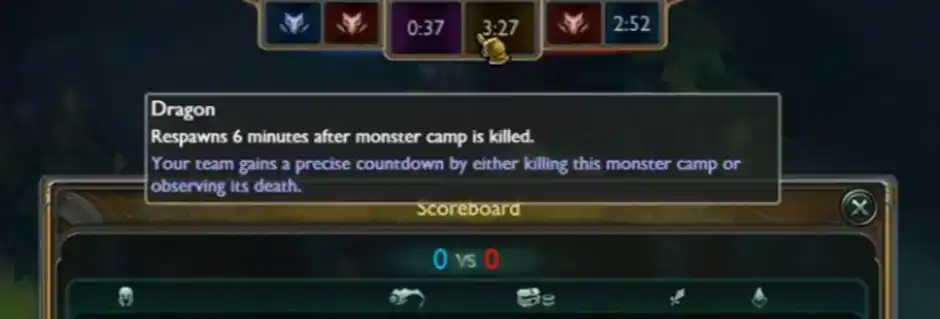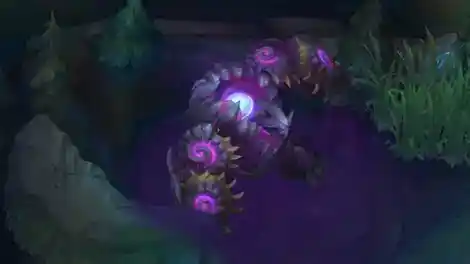Riot Admits LoL Jungle Timers Make the Game Too Easy
League of Legends has always had a complicated relationship with third-party apps. From the early days of Curse Voice to modern tools like Porofessor and Blitz, players have relied on external software to gain extra insight on the Rift. These apps often offered features that could improve your performance by providing information not available in the base client. Riot has long tried to close that gap, and with patch 25.17, the developer made a big move: in-game jungle timers.
At first glance, this seems like a smart way to level the playing field. Instead of forcing players to download additional tools, Riot is giving everyone equal access to one of the most valuable resources in LoL. But according to both the community and Riot itself, the current version of jungle timers may be too powerful, potentially making the game easier than intended.
What Are Jungle Timers in League of Legends?
Jungling is arguably the hardest role in League of Legends to master. A jungler has to track their own camps, anticipate enemy movements, set up ganks, and prepare for big objectives like Dragon or Baron. The higher you climb in LoL ranks, the more these details matter. Information can boost your chances of outsmarting the opposing jungler, and that’s why timers are so influential.

Before Riot added this system, many players turned to third-party apps for jungle camp tracking. These overlays showed respawn times with exact precision, essentially boosting a player’s ability to plan their pathing and predict the enemy’s next move. It made jungling easier for new players, but it also put those without apps at a serious disadvantage.
By bringing jungle timers directly into League of Legends, Riot aimed to remove that dependency. However, its implementation has sparked debate.
The Problem: Too Much Information
The controversy started when players realized Riot’s timers provide full-length cooldowns on enemy camps—even if you never saw the camp get taken. Popular LoL analyst Nick “LS” De Cesare highlighted this issue on social media, showing how easy it was to track the opposing jungler’s movements with perfect clarity.
For example, if you invade the enemy’s jungle and see an empty camp, the game automatically shows you exactly when it will respawn. That information can boost your ability to predict where the enemy jungler is headed, often without needing to make an educated guess.
This level of precision goes beyond what most players expected. A couple of minutes on the timer makes a huge difference. If a jungler clears Raptors and you instantly know the respawn down to the second, it’s much easier to anticipate their pathing and cut them off. In competitive play, where every second counts, this kind of information being available risks reducing the skill gap that should exist between great junglers and average ones.
Riot’s Response and Upcoming Changes
|
Riot’s balance lead, Matt “Phroxzon” Leung-Harrison, has already acknowledged the issue. Responding to community feedback, he confirmed that the team is planning to reduce the amount of information jungle timers currently provide. In his words, patch 25.18 will “dramatically reduce the information you get from spotting dead camps.” That means players won’t be able to see full-length cooldowns as easily. Instead, Riot is looking for a middle ground that provides helpful guidance without completely removing the need for skillful jungle tracking. |
 |
Previously, third-party apps often displayed camp timers up to a minute before respawn, while Riot’s new system shows just ten seconds. The future solution will likely land somewhere between those extremes.
Balancing Accessibility and Skill
The main challenge for Riot is balancing accessibility with competitive integrity. On one hand, jungle timers are a tremendous boost for new and mid-level players who might struggle to keep track of everything. Making jungling less intimidating could encourage more players to take up the role, which benefits the overall health of the game.
On the other hand, the role has always been defined by decision-making under uncertainty. If the game spoon-feeds too much data, it risks reducing jungling to simple reactions instead of rewarding smart predictions. That undermines the skill expression that separates top-ranked junglers from casual ones.
Riot is also tightening its third-party app policies, restricting tools that expose information intentionally hidden by design. This move ensures that once the new jungle timers are balanced, external software won’t be able to sneak back in and give players an unfair advantage.
What It Means for LoL Players
For now, League of Legends players should expect jungle timers to remain part of the game, but in a more limited form. If you’re trying to boost your rank, you’ll still benefit from the feature, especially while it remains more generous than intended. But don’t rely on it too much—Riot has made it clear that changes are coming.
Ultimately, this update reflects Riot’s ongoing effort to make League of Legends more approachable without sacrificing depth. The introduction of jungle timers is a positive step toward fairness, but like many changes in LoL’s long history, it will take some fine-tuning to strike the right balance.

GG Boost, the Best Elo Boosting Experience!
 Deutsch
Deutsch  Français
Français  Español
Español  Português
Português